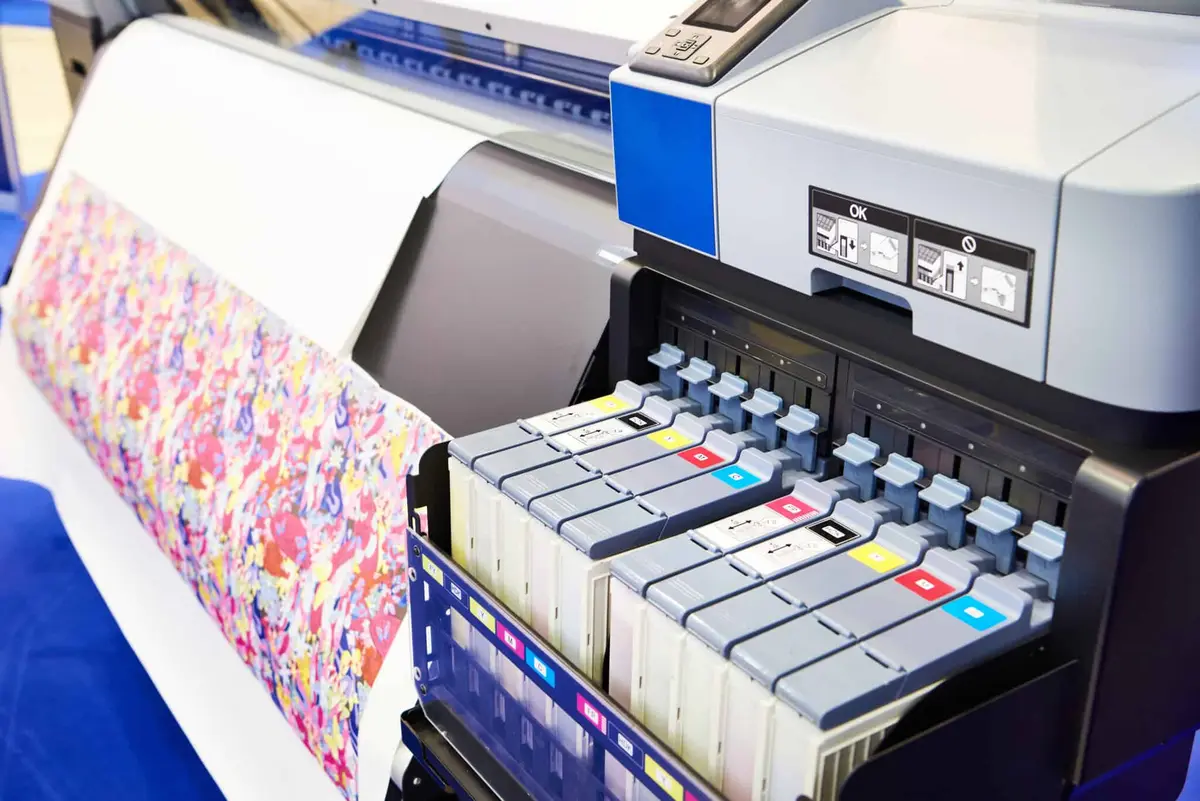When it comes to choosing a printer for commercial or personal use, there are many types you can choose from – inkjet, laser, dye-sublimation, and ultraviolet (UV) printers, among others. Among the many printers, the Sawgrass sublimation printer and the Mimaki UV printer are the most popular printing technologies today.
In case you are planning to invest in good quality printers, you can consider Sawgrass sublimation printers and Mimaki UV printers. However, there are some differences between them. This blog is about understanding the differences between professional Sawgrass sublimation printers and Mimaki UV printers. A thorough read of this blog will help you to choose the best printer according to your needs.
Sawgrass Sublimation Printers
Sublimation printing is popular in small enterprises like t-shirt printing due to its efficiency and quality. Images are produced on transfer paper and transferred to fabrics using heat and pressure in sublimation printing. The ink turns from solid into gas before bonding with the fabric at a molecular level.
Sawgrass has carved out a significant reputation as one of the leading manufacturers of sublimation printers on the market. Their Virtuoso series boasts an impressive performance ability that makes them highly sought-after by consumers. Who require quality prints for items such as mugs, personalized phone cases, or sports jerseys.
One main benefit of investing in a Sawgrass sublimation printer is its wide color gamut capability that provides vibrant colors with high saturation levels unmatched by other substrates. This means graphics retain high resolution throughout production, avoiding any degradation often seen after multiple washes experienced with traditional screen-printing techniques or colored vinyl transfers.
Mimaki UV Printers
Ultraviolet Printing (UV), also known as flatbed digital printers, utilizes large-format units capable of producing detailed designs directly onto rigid surfaces. Like plastics, metals, wood materials, and glass materials without adding extra finishes necessary during screen-printing processes).
Mimaki’s exclusive range includes flatbed models ideal for creating promotional signage for shop signs, acrylic displays advertising flags, large murals, and signage, while speedier models like the ‘UJV55-320’ can offer high-quality prints without compromising turnaround time for garment printing once deployed.
Unlike Sawgrass, which focuses on a range of sublimation printers, Mimaki produces several variations of UV printers of varying sizes to meet different production needs while maintaining quality consistency. An advantage is that their printers are designed with advanced technology and image sensors ready to enhance print productivity by reducing ink waste through precise, always-on, accurate media feeding control.
So why choose one over the other?
There isn’t a rightly superior choice between these two excellent printing technologies as they each have their strengths in specific applications. In many instances, it comes down to personal preferences or intended use, i.e., what you need your printer for.
If you’re specifically looking into fabric printing processes or requiring sturdy spandex apparel materials often favored by athletes. Such as cycling jerseys or football shorts – then a Sawgrass sublimation unit should be your preferred option. Sawgrass offers more specialized products than other vendors, including software packages, developed explicitly to help photographers achieve expert-looking designs. This is something that appeals primarily to smaller-scale multimedia operations that don’t require bulky production sheets because detail offers only extra costs when not utilized appropriately.
In contrast, UV flatbed printers provide reliable solutions for promotional material manufacture, ranging from corrugated packaging blanks and POS stands to showcase displays at trade fairs. Additionally, Mimaki UV printers allow die-cutting options, meaning quick delivery times (and potential cost savings) are easily achieved due to the ease of managing vast volumes of considerably sized modeling projects via Multilayer architecture photography. Mimaki UV Printers come equipped with augmented reality incorporation options that let operators incorporate imaginative design elements. This not only helps in customer satisfaction but also helps in creating resistant solvent-linked inks resembling dyed finishes. This certainly helps to achieve optimal color configuration much quicker, too!
Costs
The price point varies significantly between both types of machines depending on measurement, accuracy, and specifications. Along with notably hard sensory application sequences. This ensures long-lasting, vibrant colors, highlighting the pros and cons between specific additions. As Sawgrass’s Creative Studio software requires its apparatus setup. On the other hand, Mimaki offers more comprehensive UV capabilities in size with varying durability degrees.
When conducting cost analyses comparing both units, one thing to consider is that Mimaki model pricing variances may differ depending on location due to regional distributions, whereas Sawgrasses’ worldwide supply chain may be less susceptible to fluctuations related to distribution costs.
Conclusion
In this article, we have briefly discussed two prominent printing technologies of recent years. Sawgrass sublimation printer and Mimaki flatbed digital printers and shared their respective strengths through informative comparisons. Sawgrass advocates tend to prefer those looking specifically into producing printed designs via text fabrics while being involved in small-scale multimedia production operations. Meanwhile, ownership of heavily driven promotional logistics requires deep branding. Which can survive weatherproofing procedures commonly associated with market materials that can be printed via Mimaki UV printers. Further, the cost differentiation between the printers is another thing that needs to be considered. So buy the printer according to your needs and budget and witness your business flourish!
Feature Image: history-computer.com
Read also:

